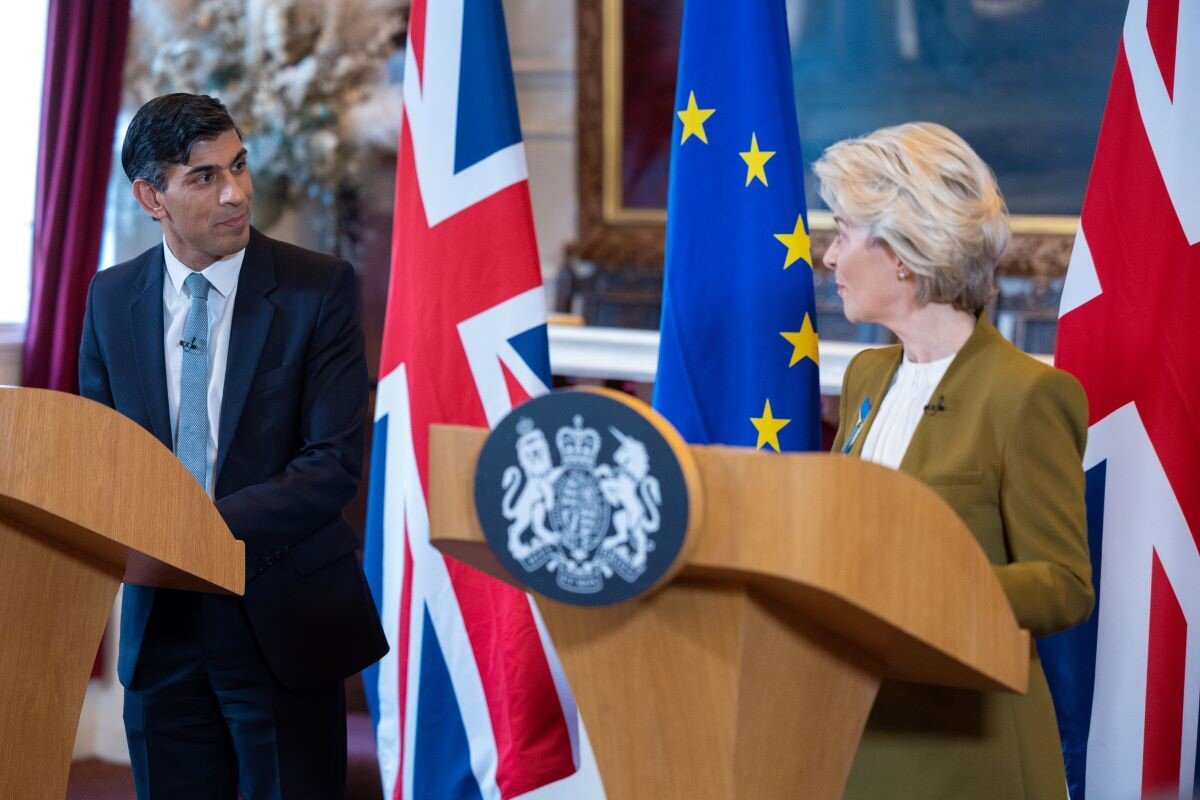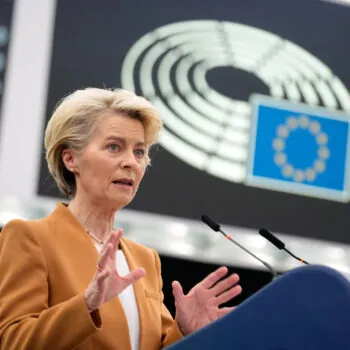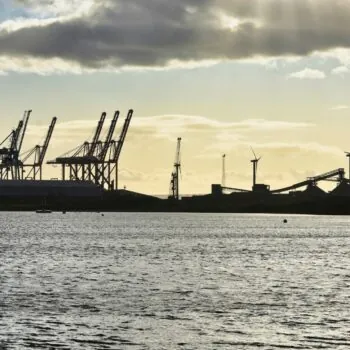The UK and EU are anticipating a “new chapter” of cooperation following the recent resolution to the Northern Ireland Protocol impasse. Climate and energy should feature highly among shared UK-EU priorities. From implementing outstanding issues in the Trade and Cooperation Agreement (TCA) to cooperating on climate diplomacy and carbon border adjustments, significant progress can be made before UK and EU elections in 2024, if political efforts are stepped up.
At the press conference announcing the Windsor Framework, the atmosphere between Rishi Sunak and Ursula von der Leyen was noticeably the warmest seen for years between UK and EU leaders.
Von der Leyen welcomed a “new chapter” in UK-EU relations and, responding to journalists, both leaders pointed to climate as a shared priority.
However, in contrast to areas like Horizon, where Von der Leyen directly said the Windsor Framework will unlock UK participation, the specifics of what UK-EU climate cooperation could look like after the Windsor deal have received less political attention.
On climate and energy, there are three main areas where progress can be made between the UK and EU in the coming year:
1. TCA implementation
The UK-EU Trade and Cooperation Agreement details three areas of climate and energy cooperation, each at differing stages of implementation:
- North Seas Energy Cooperation – here the UK has managed to make progress, securing access in December 2022. However, joint planning of offshore grid infrastructure, an urgent component of UK access, remains unresolved. This could significantly unlock future joint renewable energy developments.
- Electricity trading arrangements – hugely valuable in both economic and energy security terms, the Northern Ireland Protocol impasse was directly blocking the agreement of new arrangements to resolve the UK having defaulted to electricity trading with the EU on costly, inefficient terms post-Brexit. Now the Windsor Framework has been agreed, progress could be unlocked.
- UK-EU ETS linking – despite widespread support from business, no progress has been made on linking the UK Emissions Trading Scheme (ETS) with the EU ETS, due to lack of UK political appetite. The EU introducing its Carbon Border Adjustment Mechanism (CBAM) later this year has the potential to change this.
2. Carbon border adjustments
The EU CBAM is due to be introduced in October 2023, with a pilot phase through to 2026.
It will cover EU imports of iron, steel, cement, aluminium, fertilisers, electricity, and hydrogen. It will essentially externalise the EU ETS internationally in these sectors, charging importers an equivalent carbon price to what these industries pay domestically under the EU ETS.
The UK is one of the most trade-exposed countries to the EU CBAM, presenting significant compliance costs for UK business and particular complications for Northern Ireland.
Added to this, the UK is considering introducing its own CBAM, presenting further complications, but also new avenues for cooperation.
Linking the UK and EU ETS is the only way the UK can secure an exemption from the EU CBAM, resolving multiple issues cleanly through one negotiation.
Contrary to some preconceptions, linking the UK and EU ETS would not involve the UK accepting any EU law, if the model of the Switzerland-EU ETS link is followed.
3. International climate cooperation
Lastly, the UK and EU lack a clear model for cooperating on international climate issues, although they are highly aligned in their interests and previously cooperated well on COP26.
Building on the legacy of COP26, the UK and EU should step up their collaboration to build partnerships with major emitters to help accelerate their climate transitions.
The UK should work with European partners to respond to the Bridgetown Initiative, to deliver the reform needed in global financial institutions to unlock the trillions in finance needed for climate-aligned sustainable development.
Lastly, potential EU withdrawal from the Energy Charter Treaty will test UK climate diplomacy in the months ahead. The UK risks becoming trapped in an unreformed Treaty – threatening the UK’s net zero ambitions at home and its credibility abroad – if it doesn’t update its negotiating position to explore a coordinated Treaty withdrawal with like-minded European countries.
There is clearly no shortage of topics to build an ambitious agenda for UK-EU climate cooperation after the Windsor Framework. However, this agenda suffers from a fundamental lack of political direction. With next year’s UK and EU elections rapidly approaching, the time to act is now.



